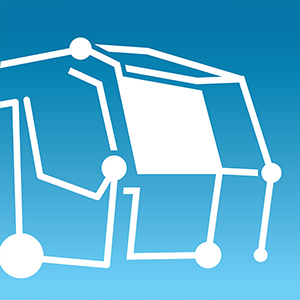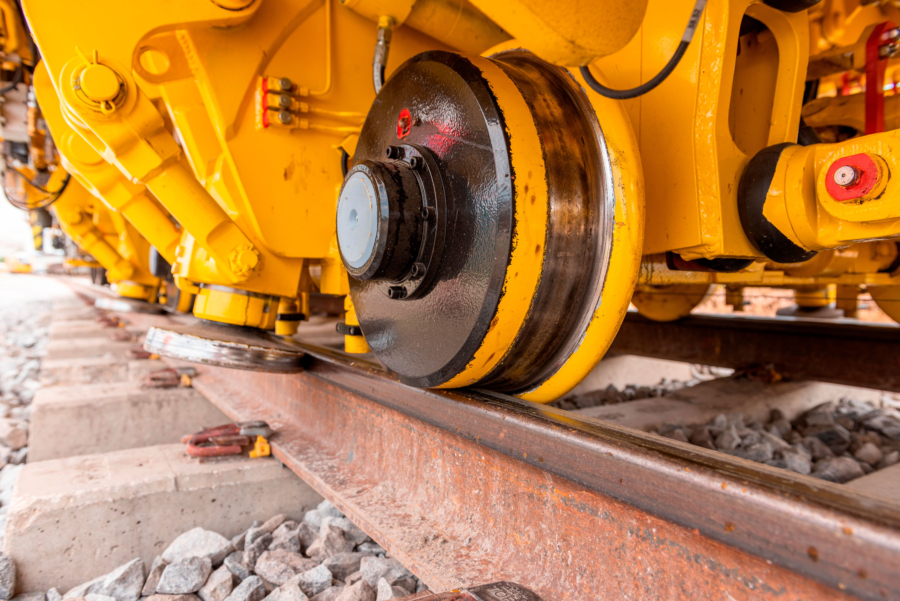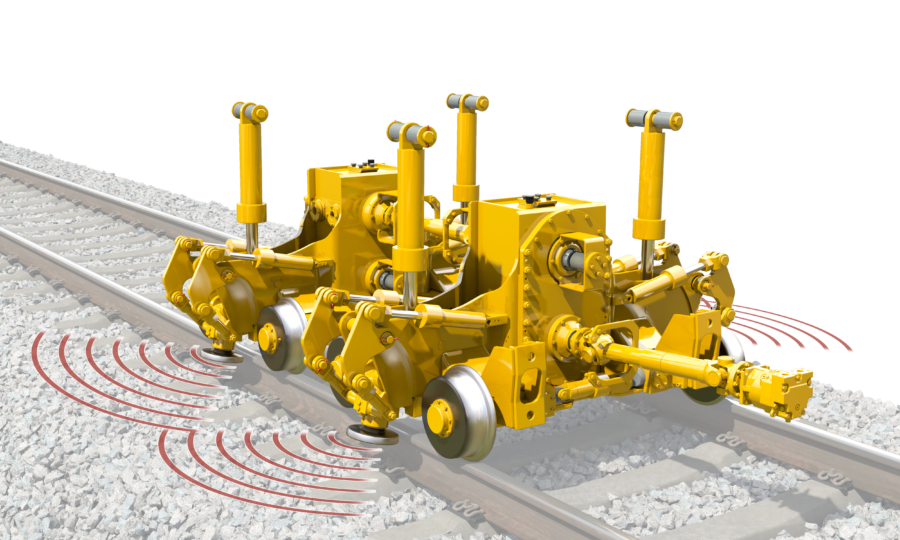
What are the main components of a DGS and how are vibrations introduced into the ballast bed?
A stabilising unit consists of two main components that work independently of one another: unbalance exciters and vertical load cylinders. Depending on the machine, a single work unit or two work units coupled together are mounted.
On every work unit, unbalanced masses rotating in opposite direction generate vibrations crosswise to the track. The unbalanced masses are synchronised via a gearbox. Their positioning makes it possible that the vertical force components cancel each other out and a purely horizontal vibration is produced.

In addition, every work unit is equipped with two hydraulic load cylinders that are supported on the machine frame and apply an infinitely variable load.
Guide rollers and contact rollers transmit vibrations to the track panel and enable continuous working action. In turnouts, the lateral contact rollers are temporarily lifted up on one side to avoid damage to turnout components. In the meantime, the guide and contact rollers transmit vibrations to the track panel on the side of the continuous rail.


In 1983, the Graz University of Technology did extensive research to determine the ideal parameters for dynamic track stabilisation. The findings showed that ballast compaction is up to seven times more efficient if vibrations occur horizontally.(J. Fischer: Einfluss von Frequenz und Amplitude auf die Stabilisierung von Oberbauschotter. Doctoral thesis, Graz University of Technology, June 1983)